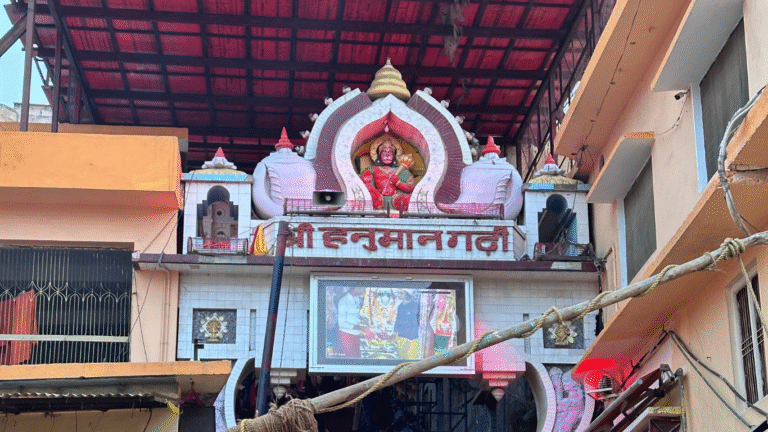
Uttar Pradesh, one of the most historically rich states in India, is home to some of the most important UNESCO World Heritage Sites. These sites are recognized globally for their cultural, historical, and architectural value. They are not just tourist attractions but also treasures that preserve the legacy of India’s past. Visiting them offers a chance to walk through history, experience architectural brilliance, and understand the traditions that shaped the region.
UNESCO World Heritage Sites in Uttar Pradesh include monuments like the Taj Mahal, Agra Fort, and Fatehpur Sikri. Each of these structures tells a unique story about the Mughal era, reflecting the blend of art, culture, and innovation that marked their time. They continue to inspire architects, historians, and travelers from across the world.
For Uttar Pradesh, these sites are more than historical landmarks. They play a vital role in tourism, contribute to the state’s economy, and highlight India’s heritage on a global stage. Learning about them helps us appreciate not only their beauty but also the significance of conserving them for future generations.
The Taj Mahal: Jewel of India
The Taj Mahal in Agra is undoubtedly the most famous UNESCO World Heritage Site in Uttar Pradesh and one of the Seven Wonders of the World. Built by Emperor Shah Jahan in memory of his wife Mumtaz Mahal, it is an extraordinary example of Mughal architecture. Made of white marble and adorned with intricate carvings and precious stones, the Taj Mahal is often seen as a symbol of eternal love.
When you visit, the first thing that strikes you is its sheer symmetry and the way it changes color with the light of the day. From the soft pink at sunrise to glowing white under the moonlight, the monument never fails to amaze. Beyond its romantic story, the Taj Mahal represents the artistic brilliance and engineering skills of the Mughal period.
Tourists from all over the globe come to Agra to witness this masterpiece, making it a key contributor to Uttar Pradesh’s tourism industry. Its recognition as a UNESCO site ensures efforts are made to preserve and protect it, so its charm remains timeless for generations ahead.
Agra Fort: A Glimpse into Mughal Power
Just a short distance from the Taj Mahal lies another UNESCO World Heritage Site, the Agra Fort. This massive red sandstone fort was built by Emperor Akbar in the 16th century and later enhanced by his successors. Unlike the Taj Mahal, which is celebrated for its romance, Agra Fort reflects strength, power, and strategy.
The fort is not just a military structure; it was once the seat of the Mughal Empire. Within its walls are palaces, mosques, and audience halls that showcase the grandeur of the Mughal court. Walking through the fort, one can imagine the historical events that unfolded here—royal ceremonies, political discussions, and even the imprisonment of Shah Jahan, who spent his last years gazing at the Taj Mahal from its windows.
Agra Fort’s importance lies in its combination of beauty and power. The blend of red sandstone and white marble architecture highlights the evolving styles of the Mughal period. For visitors, it offers a journey back to a time when Agra was the heart of India’s politics and culture.
Fatehpur Sikri: The Abandoned City
Fatehpur Sikri, located about 40 kilometers from Agra, is another UNESCO World Heritage Site in Uttar Pradesh. Built by Emperor Akbar, it was meant to be the capital of the Mughal Empire. However, due to a shortage of water, the city was abandoned after only a few years. Today, it stands as a perfectly preserved example of Mughal urban planning.
The city is full of architectural wonders like Buland Darwaza, Jama Masjid, Panch Mahal, and the tomb of Salim Chishti. Each structure reflects the emperor’s vision of combining Persian, Indian, and Islamic architectural styles. The grandeur of Fatehpur Sikri shows Akbar’s ambition to build not just a city but a cultural hub that symbolized unity.
Walking through Fatehpur Sikri feels like stepping into a forgotten world. The courtyards, palaces, and mosques remain largely intact, allowing visitors to imagine how life might have been during its short-lived glory. Its status as a UNESCO site ensures it is preserved as a reminder of both Mughal brilliance and the fragility of human plans against nature.
FAQs
Q1. How many UNESCO World Heritage Sites are in Uttar Pradesh?
There are three UNESCO World Heritage Sites: Taj Mahal, Agra Fort, and Fatehpur Sikri.
Q2. Why is the Taj Mahal a UNESCO site?
It is recognized for its exceptional architecture, cultural importance, and historical significance.
Q3. Can tourists visit all these sites in one trip?
Yes, since all three are located near Agra, they can be covered in a single visit.
Q4. What is special about Fatehpur Sikri?
It is a well-preserved city built by Emperor Akbar that showcases Mughal architecture and planning.
Q5. Do these sites contribute to tourism in Uttar Pradesh?
Yes, they attract millions of visitors every year, boosting the state’s economy and cultural recognition.



